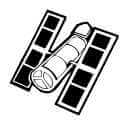Down
| 2. | An imaginary line through the middle of a body or planet, through which that object spins. |
| 3. | The temperature on this planet ranges from 90 K to 700 K, but it is not the hottest planet in the Solar System. |
| 4. | One complete circular movement made by one object around another object. |
| 5. | The only planet where life is known to exist. |
| 6. | The mixture of gases that surrounds a planet. |
| 7. | (2 Words) Mercury, Venus, Earth, and Mars. (2 words) |
| 9. | A concentration of small celestial bodies between Mars and Jupiter. (2 words) |
| 10. | The point in the orbit of a planet or other body at which it comes closest to the sun. |
| 11. | A gas with no color or odor that is a mixture of carbon and oxygen. (2 words) |
| 12. | The sun and the celestial bodies that orbit the sun, including planets, satellites, asteroids, comets, dust, and gas. (2 words) |
| 13. | (2 Words) Jupiter, Saturn, Uranus, and Neptune. (2 words) |
| 15. | The process by which material is worn away by forces such as glaciers, wind, and waves. |
| 16. | Saturn has two of these that are very bright. |
| 17. | The curved path in which a planet, satellite, or spacecraft revolves around another body. |
| 19. | The nearest star to Earth and the center of the Solar System. |
|
|
Across
| 1. | This planet's blue color is the result of methane gas in the atmosphere. |
| 6. | Any of thousands of celestial bodies with diameters between one and five hundred miles that revolve around the sun in orbits located mostly between those of Jupiter and Mars. |
| 8. | The outer atmosphere of a star. |
| 14. | A unit of length equal to the average distance from Earth to the sun (93 million miles). (2 words) |
| 18. | The warming of an atmosphere that is the result of gases such as carbon dioxide which prevent the sun's heat from escaping. (2 words) |
| 20. | Pieces of rock or metal that have reached the Earth from outer space. |
|






































































































































































































































































































































































































































































































































































































































